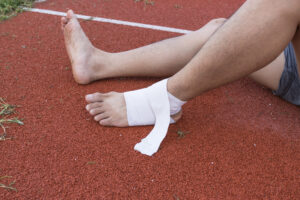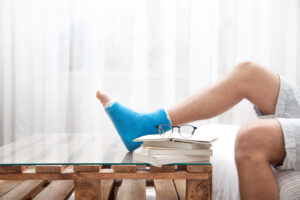Insertional Achilles tendinitis is a condition that affects the Achilles tendon, which is a thick band of tissue that connects the calf muscles to the heel bone. This condition occurs when there is inflammation or irritation at the point where the tendon attaches to the heel bone. This can be caused by overuse, injury, or aging.
One of the most common symptoms of insertional Achilles tendinitis is pain and stiffness in the back of the heel, especially after physical activity. Swelling and tenderness may also be present around the affected area. If left untreated, this condition can lead to more severe complications, such as tendinosis or even a rupture of the tendon.

Fortunately, there are several effective treatments for insertional Achilles tendinitis. The first step is always to rest and avoid activities that aggravate the condition. Ice and compression can help to reduce pain and swelling. Nonsteroidal anti-inflammatory drugs (NSAIDs) can also help to alleviate pain and inflammation.
Physical therapy is a crucial component of treatment for insertional Achilles tendinitis. A skilled physical therapist can help you to stretch and strengthen the muscles and tendons around the affected area. They may also use techniques such as ultrasound or shockwave therapy to promote healing and reduce pain.

In some cases, surgery may be necessary to treat severe cases of insertional Achilles tendinitis. Fortunately, this procedure can be done with minimally invasive technique. This involves a small (2 mm) stab incision, part of the heel bone being cut and then fixed with screws. Recovery time varies depending on the severity of the condition and whether or not surgery is required.
In addition to these treatments, it’s important to take steps to prevent future flare-ups of insertional Achilles tendinitis. This includes wearing properly-fitting shoes with good arch support, warming up before physical activity, and gradually increasing the intensity and duration of exercise.
Conclusion:
Insertional Achilles tendinitis is a painful condition that can significantly impact your quality of life. However, with proper treatment and self-care, it’s possible to alleviate symptoms and prevent future flare-ups. If you are experiencing pain or discomfort in the back of your heel, don’t hesitate to seek medical attention.






